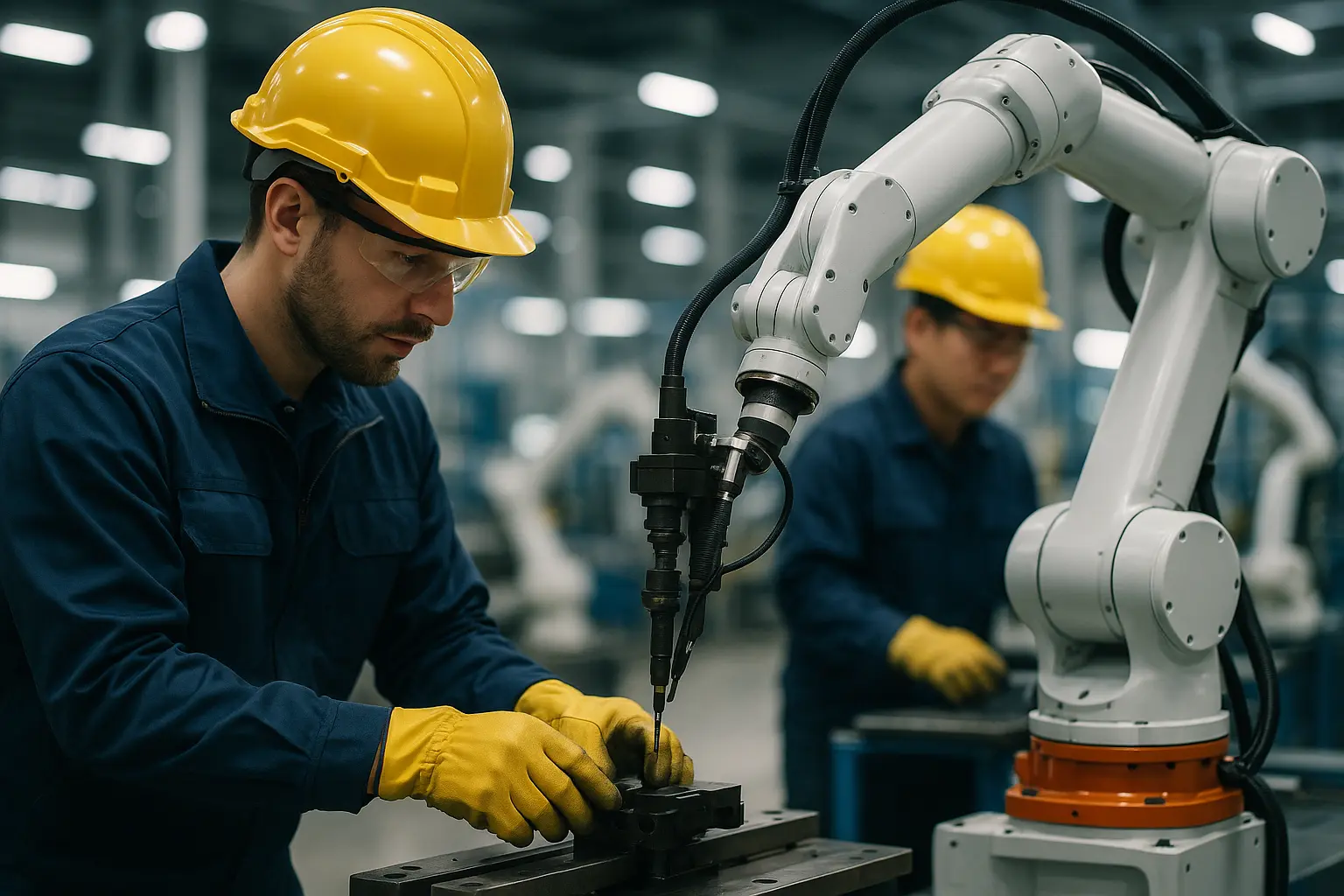The Basics of Predictive Maintenance
In the ever-evolving landscape of modern industry, the way we care for our equipment is undergoing a transformation. Predictive maintenance is not just a buzzword; it’s a vanguard in asset management. With a combination of data-driven insights, advanced sensors, and real-time monitoring, we are redefining how we approach machine care. Imagine a world where we minimize downtime, extend the life of our equipment, and reduce costs – all through predictive strategies. Let’s delve into the intricacies of this revolutionary approach to equipment maintenance.
Understanding the Predictive Maintenance Landscape
Predictive maintenance stands at the crossroads of technology and tradition, bringing forth a proactive approach to managing assets. At its core, it involves the continuous monitoring of equipment to detect potential issues before they escalate into costly failures. Utilizing technologies such as vibration analysis, thermography, and oil analysis, we can predict when a failure might occur, allowing us to schedule maintenance at the most convenient time.
This approach results in minimal downtime, ensuring that operations run smoothly. Compared to reactive or preventive maintenance, predictive maintenance offers a more intelligent method of asset care. Sensors fitted in machines continuously relay critical data, which is then analyzed to detect anomalies. By focusing on the actual condition of a machine, rather than relying on estimated wear and tear, we ensure that maintenance is only performed when necessary. This not only economizes resources but also optimizes system performance.
Predictive maintenance is not just about technology; it requires a shift in mindset. We are moving from a reactive approach to an anticipatory one, which demands a deeper understanding of the equipment we manage. The integration of data analysis and traditional maintenance practices is key, providing a comprehensive view of an asset’s health and performance.
Harnessing Data for Proactive Maintenance
Data is the linchpin of predictive maintenance. By leveraging information collected from various sources, we can make informed decisions about the health and performance of our equipment. The process begins with the deployment of smart sensors that capture a plethora of information, from temperature fluctuations to vibration patterns.
Once data is collected, it is subjected to rigorous analysis. Advanced algorithms sift through the information, identifying patterns that signal potential issues. This wealth of data allows us to recognize early warning signs, such as unusual vibrations or operating temperatures, which could indicate underlying problems. By addressing these issues proactively, we mitigate the risk of unexpected downtime and equipment failures.
But data is only as powerful as the insights we can derive from it. That’s why effective monitoring systems are crucial. These platforms not only interpret data but also provide actionable insights. By implementing predictive maintenance, we reduce the guesswork and focus solely on substantiated performance metrics. This ensures that our maintenance teams can work smarter, not harder, concentrating their efforts on areas that truly need attention.

The Benefits of Predictive Maintenance
Adopting predictive maintenance brings with it a host of advantages that resonate throughout the industry. Primarily, it allows us to maintain optimal performance while minimizing operational disruptions. By foreseeing potential issues, we can plan maintenance schedules more effectively, avoiding unnecessary interruptions.
One significant benefit is the reduction in costs associated with unexpected breakdowns. By addressing condition issues before they escalate, we save on expensive repair and replacement expenses. Moreover, predictive maintenance leads to an increase in equipment lifespan, as assets are cared for in a manner that minimizes wear and tear.
Another advantage lies in improved safety. Machines that are in good condition are less likely to malfunction, reducing the risk of accidents. Furthermore, predictive maintenance fosters an environment of continuous improvement. By regularly analyzing equipment performance, we can identify systems or processes that need refinement, optimizing the overall efficiency of operations.
Ultimately, predictive maintenance is not only about maintaining equipment; it’s about transforming the way we think about asset management. It empowers organizations to act decisively, based on tangible data, and fosters a culture of reliability and efficiency.
The journey to predictive maintenance is one of innovation and foresight. As we stand on the cusp of this technological revolution, it’s clear that the future of equipment care lies not in reaction, but in prediction. By harnessing the power of data, embracing cutting-edge analysis, and committing to a proactive mindset, we unlock unprecedented possibilities for asset management.
Let us move forward, equipped with these insights, to redefine the standards of maintenance across industries. Through dedication to predictive practices, we can pave the way for an era marked by efficiency, safety, and enduring reliability.
FAQ
What is predictive maintenance?
Predictive maintenance is a strategy used to anticipate when equipment might fail by analyzing data and identifying patterns that suggest wear and tear or impending issues. This approach helps in scheduling timely maintenance to prevent unexpected breakdowns.
How does predictive maintenance differ from preventive maintenance?
Predictive maintenance uses data-driven insights to predict potential equipment failures, allowing interventions only when necessary. Preventive maintenance, on the other hand, involves routine checks and servicing at set intervals, regardless of the equipment’s condition.
What technologies are commonly used in predictive maintenance?
Predictive maintenance often employs technologies such as sensors for real-time monitoring, data analytics software to process information, and machine learning algorithms to identify patterns and predict failures. Other tools may include IoT devices and cloud-based platforms.
What are the benefits of implementing predictive maintenance?
Implementing predictive maintenance can lead to reduced downtime, cost savings on repairs, extended equipment lifespan, and improved operational efficiency. It also enhances safety by preventing unexpected equipment failures.
What industries can benefit from predictive maintenance?
Predictive maintenance is beneficial across various industries, including manufacturing, energy, transportation, and healthcare. Any sector that relies heavily on machinery and equipment can leverage predictive maintenance for better asset management and operational efficiency.













